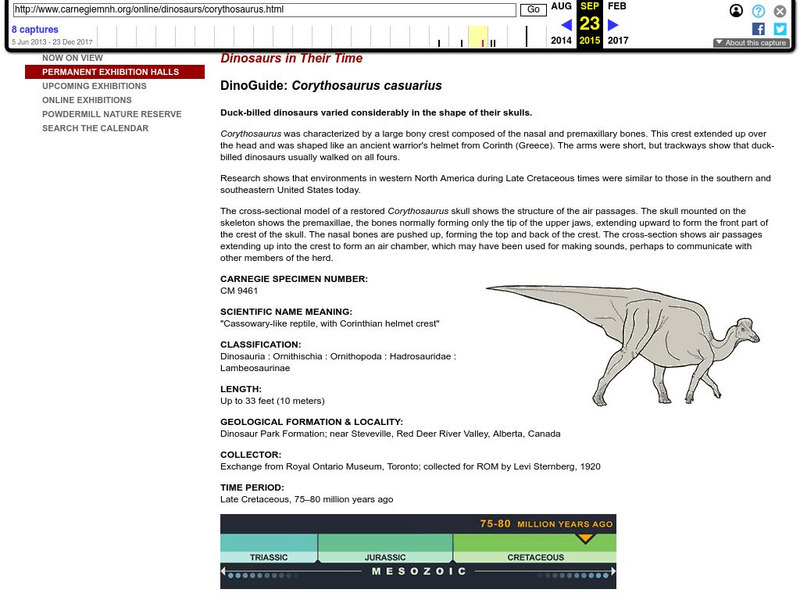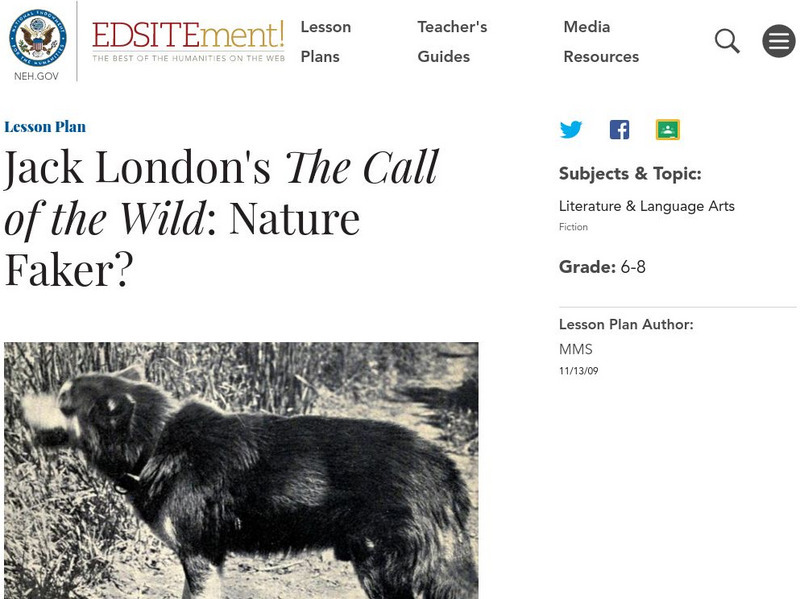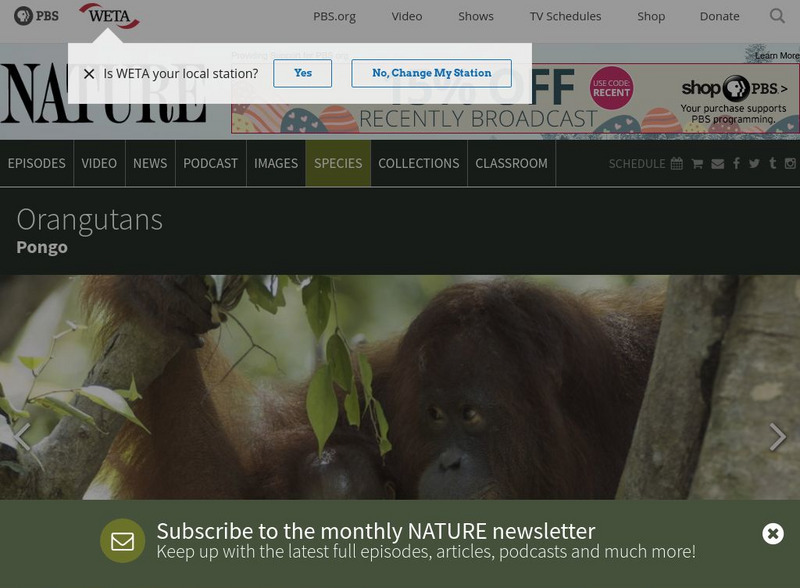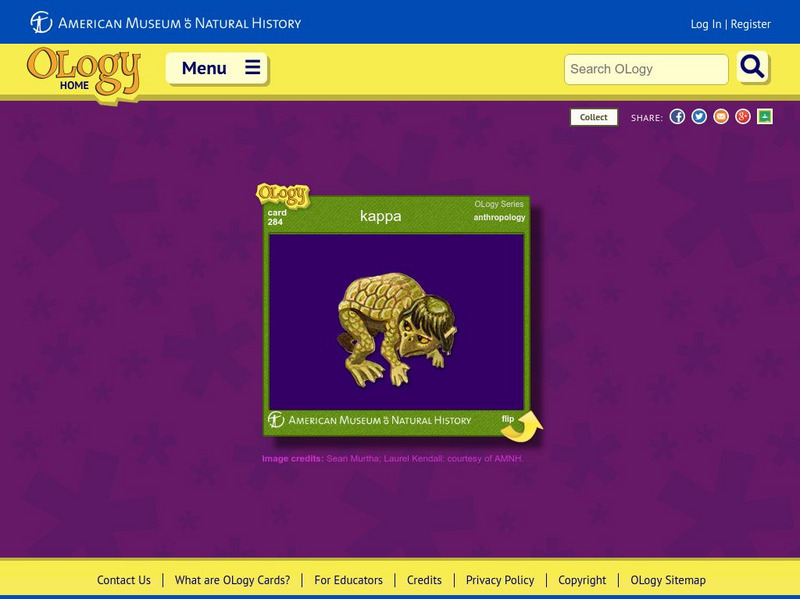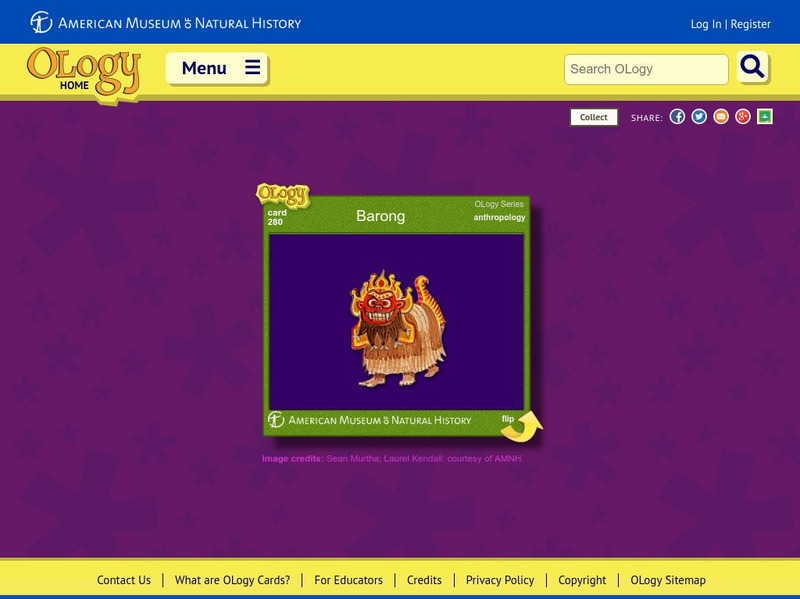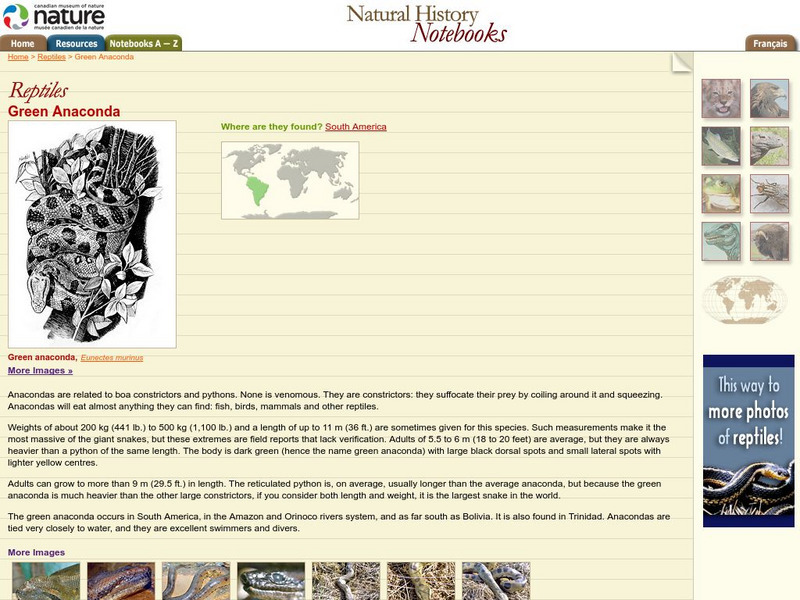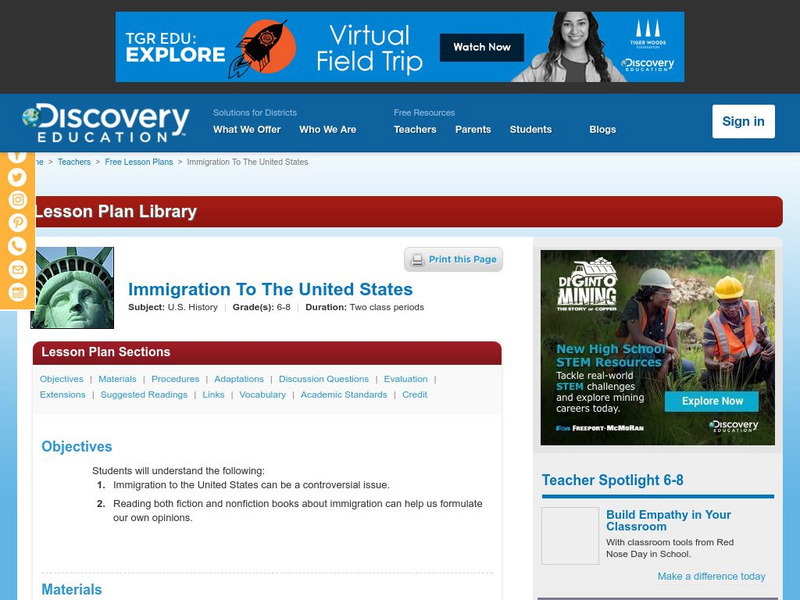American Institute of Biological Sciences
Action Bioscience: Natural Selection: How Evolution Works
An interview with Douglas Futuyma, renowned evolutionary scientist, explaining the theory of natural selection and how it steers toward evolution.
Other
Irvine Ranch Natural Landmarks
Irvine Ranch is a unique natural landmark in southern California rich in geology and biodiversity.
American Institute of Biological Sciences
Action Bioscience: Natural History Museum Collections in the 21st Century
Discover why some people feel that natural history museums are more import now than they have ever been. Familiarize yourself with some of the challenges these museums are facing.
University of Florida
Florida Museum of Natural History: Orange Clownfish
The Florida Museum of Natural History presents an in-depth look at orange clownfish, small reef fish. Learn about the taxonomy, common names, geographical distribution, conservation, habitat, food habits, reproduction, importance to...
University of Florida
Florida Museum of Natural History: Peacock Flounder
The Florida Museum of Natural History presents an in-depth look at the peacock flounder. Learn about the taxonomy, common names, geographical distribution, conservation, habitat, food habits, reproduction, importance to humans, and more.
Carnegie Museum of Natural History
Carnegie Museum of Natural History: Carnegie's Dinosaurs: Dino Guide: Corythosaur
Study a Corythosaurus up close with this concise resource from the Carnegie Museum of Natural History.
University of Florida
Florida Museum of Natural History: My Body My Senses
This teacher's guide introduces children to the human body and the five senses and covers the major body parts and what they do. Children also will use their five senses to learn about the world.
National Endowment for the Humanities
Neh: Edsit Ement: Jack London's the Call of the Wild: "Nature Faker"?
In this lesson plan, students will consider "Jack London's The Call of the Wild: "Nature Faker"?." The plan includes worksheets and other student materials that can be found under the resource tab.
Other
Doctor Yourself: What's the Difference Between Natural and Synthetic Vitamins?
Discusses the non-nutritional ingredients in vitamins and explains the differences between natural and synthetic vitamins. The examples of vitamins C and D are looked at in more detail.
Canadian Museum of Nature
Canadian Museum of Nature: Yukon Horse
Find out about the Yukon Horse, an extinct animal that covered much of North America at one time.
PBS
Pbs Nature: Orangutans
Come and check out this awesome resource on orangutans. Students who need help narrowing their informational search will benefit from this clear and concise resource.
Carnegie Museum of Natural History
Carnegie Museum of Natural History: Tlingit of the Northwest Coast
Explore the culture, beliefs, and people of the Tlingit Indians of the Northwest Coast.
American Museum of Natural History
American Museum of Natural History: O Logy: Kappa
Find out about the Japanese mythical water creature called Kappa. Flashcard format.
American Museum of Natural History
American Museum of Natural History: O Logy: Barong
Read about Barong, an important mythical creature in Indonesian culture even in modern times. Take the quiz to learn more about the Barong. Flashcard format.
Read Works
Read Works: If Rocks Could Talk!: Obsidian
[Free Registration/Login Required] This PDF passage "If Rocks Could Talk!: Obsidian" from the American Museum of Natural History features an interview with an igneous rock named Obsidian. It is part of a paired text with "If Rocks Could...
National Gallery of Art
National Gallery of Art: Diana and Endymion
Learners will be introduced to the Greco-Roman myth of Diana and Endymion by critically analyzing a painting by Fragonard. They will then write and illustrate their own myth to describe a natural phenomenon or social custom.
Canadian Museum of Nature
Canadian Museum of Nature: Bactrian Camel
Bactrian camels are found wild in the Gobi Desert, and in the grasslands of China and Mongolia. Details about this animal can be found here along with photos.
Canadian Museum of Nature
Canadian Museum of Nature: Northern Leopard Frog
Here, the Northern Leopard Frog, a popular frog throughout North America, is described in succinct detail.
Canadian Museum of Nature
Canadian Museum of Nature: Common Loon
The Common Loon is the provincial bird of Ontario. Described are it's characteristics, offspring, and migratory patterns. Ten beautiful images capture this majestic bird in its environment.
Canadian Museum of Nature
Canadian Museum of Nature: Black Capped Chickadee
Have you heard the bird call, "Chicka-dee-dee-dee"? This familiar call belongs to New Brunswick's provincial bird. Briefly described are its song, features, food and habitat. Included are ten beautiful close up photographs.
Canadian Museum of Nature
Canadian Museum of Nature: Anaconda
Did you know that a full grown Anaconda can weigh as much as 200 K g (441 lb.)? This is just one of the interesting facts that describe this reptiles features and habitat. Seven photographs provide excellent close up views.
Canadian Museum of Nature
Canadian Museum of Nature: Galapagos Land Inguana
Today, very few of the Galapagos land iguanas exist. Described are their characteristics, food, and reproduction. Eight photographs show this iguana close up in its habitat.
Canadian Museum of Nature
Canadian Museum of Nature: Yellow Bellied Sapsucker
Briefly described are the characteristics and feeding habits of the Yellow-bellied Sapsucker. This is of one of the few species of migratory woodpeckers. Two pictures provide a close up view.
Discovery Education
Discovery Education: Immigration to the United States
Great teacher resource for helping your learners learn about immigration and why people come to the United States. Help them understand the whole immigration process and why some immigrants may have complications. Includes a glossary.







